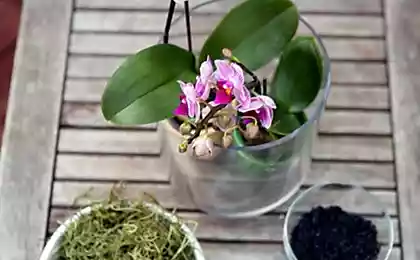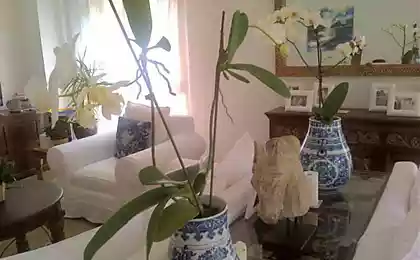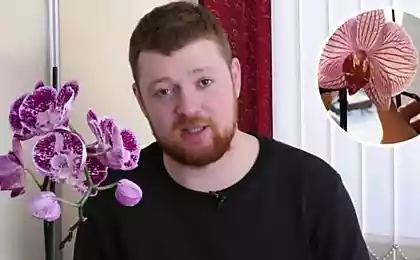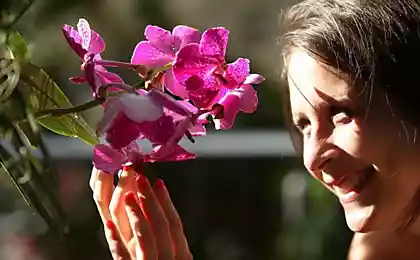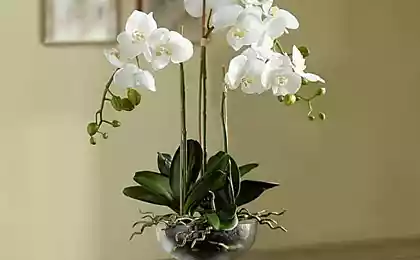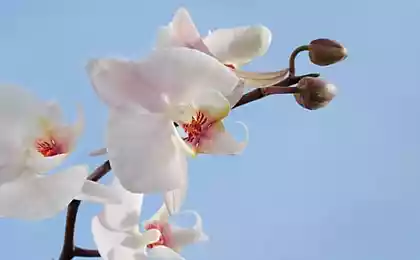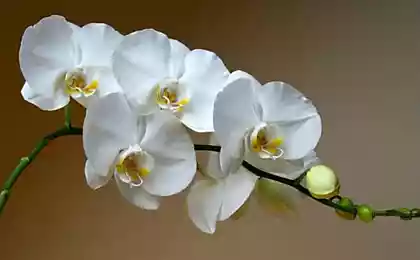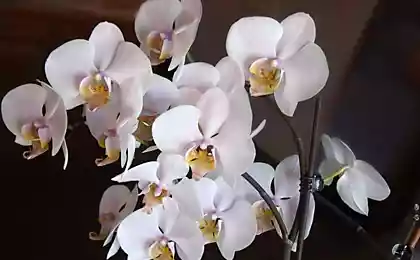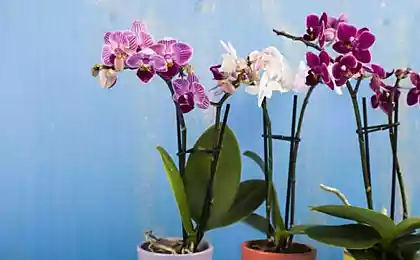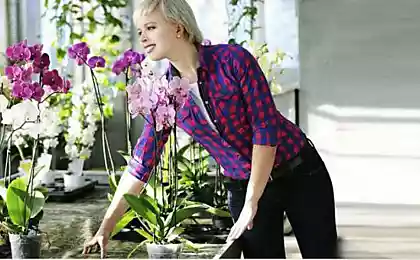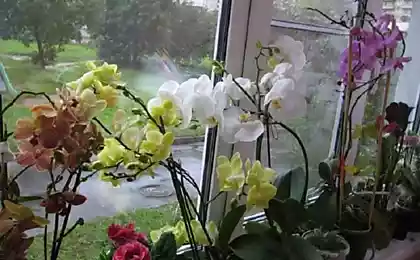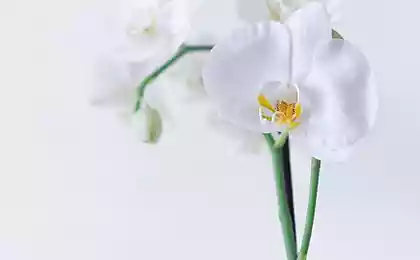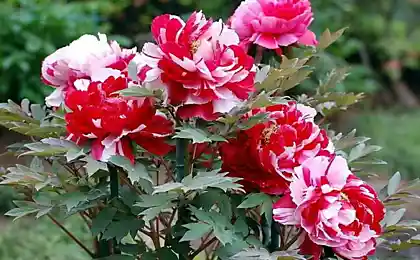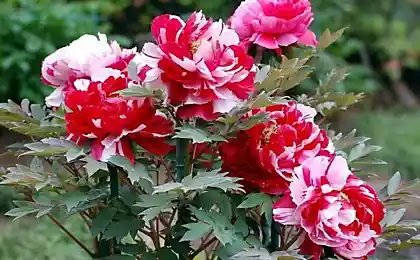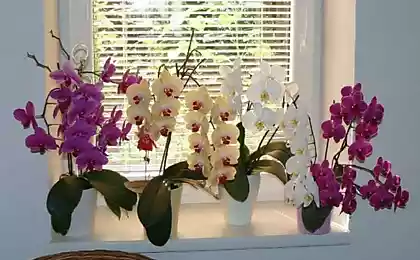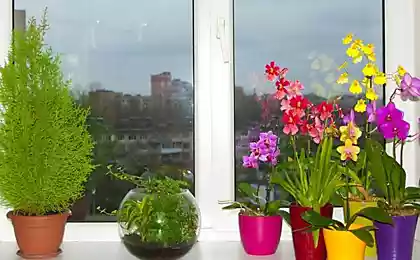678
How to propagate Phalaenopsis Orchid
To propagate Phalaenopsis will succeed only if she is healthy and gets the necessary nutrients, sufficient light and moisture. A distinctive feature of Phalaenopsis is that this type of Orchid has pseudobulbs that are responsible for the accumulation of nutrients.
And if some orchids with pseudobulbs successfully propagated by division of the rhizome, Phalaenopsis this way is unacceptable. In their natural habitat Phalaenopsis propagated by seeds and by new shoots that appear after flowering.
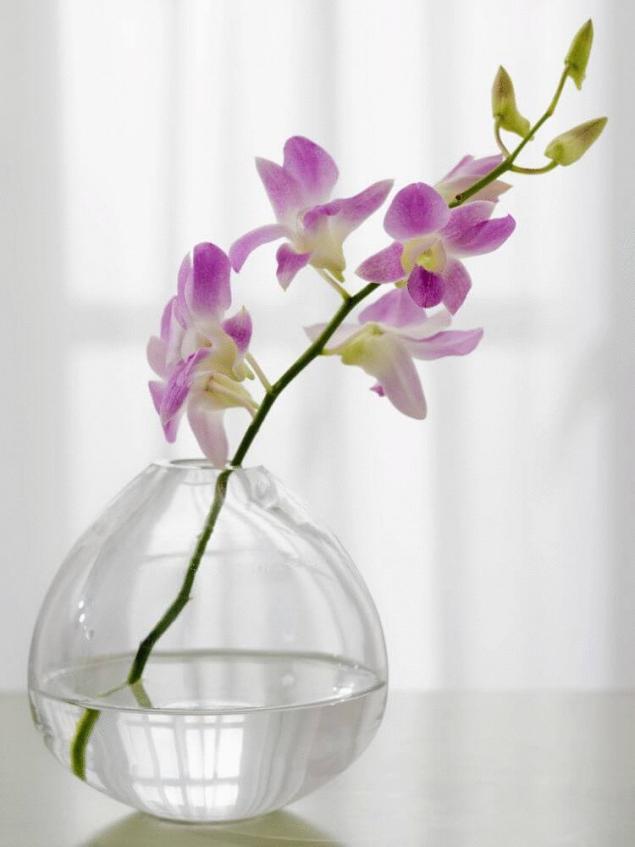
To Phalaenopsis soon started to form new shoots, it requires appropriate care and the difference in daytime and nighttime temperatures (for flowering), and night value must not be below 15 °C...
After quite a long flowering occurs the most favorable period for breeding. Growth children on the stalks of Phalaenopsis contribute to increased temperature (more than ++30° C) and high humidity, however, even in these conditions, the dormant buds awaken, not always.Sometimes "kids" on the peduncle appear by themselves and sometimes for their appearance it is necessary to stimulate reproduction.
If you are lucky, on peduncle formed babies, then leave them to develop until the appearance of two pairs of leaves, and aerial roots with a length of 5 cm, and then carefully separated. But it should be borne in mind that the development of babies can badly affect maternal outlet, causing some of the problems of growing season, and therefore requires especially careful handling.
How to stimulate the appearance of children.
To stimulate the emergence of children from dormant buds located on the stems, you need to very carefully remove covering their scales, trying not to injure the buds. Then the buds coated with the hormone cytokinin paste, causing the plant will start soon to produce offspring. Or noticeable on the stems dormant buds wrapped in damp sphagnum moss and tied with polyethylene. Phalaenopsis are kept in a warm and humid atmosphere. As soon as the young shoots are formed, the polyethylene is removed, but the moss can be left up to the appearance of roots.
Pasta with necessary contents of cytokinin easy to prepare at home.
For this, 10 mg of kinetin or 6-BAP (6-benzamidophenyl) was dissolved in 1 ml of water and mixed with 1 g of lanolin.
The resulting mixture was thoroughly stirred to form a homogeneous emulsion of white color.
Single treatment of buds on the flower stalks of Phalaenopsis when the air temperature ++22° C can ensure the emergence of a lateral branch of the peduncle.
To avoid this, and to cause the formation of vegetative shoots, the plant should be processed to put in the detention center with air temperatures not below +28° C. after 3-5 days treatment of kidney can be repeated.
However, even under the influence of 6-BAP kids on the stalks are formed not always. Often instead of them evolving side branch of the peduncle. Despite the difficulties and poor reproducibility of results, many growers continue to work in this direction.
How to care for baby of Phalaenopsis.
Some share experiences that do not wait for the appearance of roots at the children living on the flower-arrow of the parent outlet. And with the advent of 4 leaves on the baby it is (because they claim that the hybrid Phalaenopsis kids the roots are not released in this condition and eat only at the expense of the parent plant).
Cuts on the peduncle and on the baby, dusted with powdered charcoal or cinnamon. Recommend baby dry for days, after which fine fraction is deposited in the substrate, and expect the appearance of roots. The lower pair of leaves of the Phalaenopsis-the kids gradually turn yellow. But you can not pick them, they will disappear when you run out the balance of nutrients, by that time it is possible to form the first roots.
Better rooting of baby Phalaenopsis in a small greenhouse, the optimal temperature of the contents of kids, sometimes to encourage uses hormones, spraying the substrate kornevina Appin, or IAA. Leaves the kids to spray the hormones are not worth it, otherwise the appearance of the roots will be delayed and will begin development leaves.
Another method, which is used for stimulating roots on baby, it's location close to the water. Take transparent plastic boxes, a flat piece of foam, which make a little hole, and fasten on it fixedly and securely rosette of Phalaenopsis-kids. In the box, pour water, drop a "boat" made of foam with the honey, and closing.
High humidity and heat trigger the emergence of roots faster. With the emergence of the roots, Phalaenopsis are transplanted into the bark and grow as an adult plant.Given that Phalaenopsis are grown for sale and propagated in vitro (lat. "in glass"), the sellers are not interested in the further life of the plant
How to propagate Phalaenopsis Orchid.
1.After flowering of Phalaenopsis, cut at the base of the stems, then cut into several pieces the size of 3-4 cm so that the center of each handle was a sleeping kidney. All the slices are carefully processed by wood powder and activated carbon, and the cuttings are placed in a propagation case in a wet sphagnum moss. At a temperature of 25-28 °C and maintain high humidity, the cuttings successfully germinate.
Here's another tip — just cut otzivi stems and put it in water with fertilizers in the sun, sometimes sprinkling Dr. Foley. Wake up almost all the buds and they formed the kids.
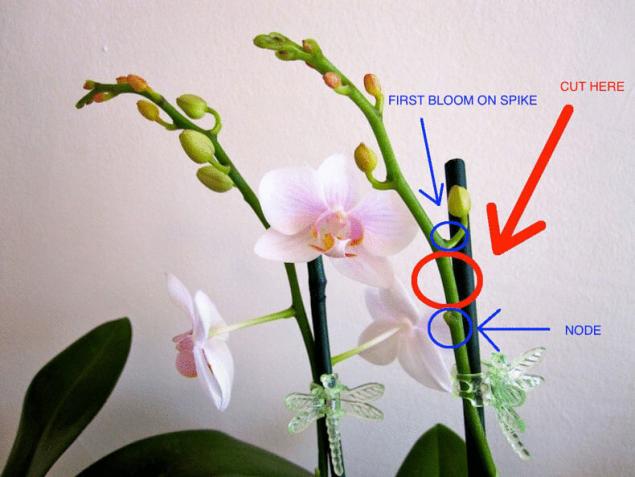
2. Mature plants with a large outlet, can be propagated by division of the rosettes.
For this you need a clean sharp knife or secateurs to cut off the tip of the Phalaenopsis with a few leaves and aerial roots. Slices on both parts of the plant are also processed with charcoal, and then the apical stalk is planted in a separate pot. With proper care, the cuttings successfully rooted and after 2 — 3 years transformed into a fully flowering plant.
For mother plants continue to care for and within a few months at the base are lateral buds, which develop new plants. As cuttings and grown up "kids" landed in standard Orchid mix, pine bark and moss-sphagnum. published
P. S. And remember, just changing your mind — together we change the world! ©
Join us in Facebook , Vkontakte, Odnoklassniki
Source: As propagated orchid phalaenopsis
And if some orchids with pseudobulbs successfully propagated by division of the rhizome, Phalaenopsis this way is unacceptable. In their natural habitat Phalaenopsis propagated by seeds and by new shoots that appear after flowering.

To Phalaenopsis soon started to form new shoots, it requires appropriate care and the difference in daytime and nighttime temperatures (for flowering), and night value must not be below 15 °C...
After quite a long flowering occurs the most favorable period for breeding. Growth children on the stalks of Phalaenopsis contribute to increased temperature (more than ++30° C) and high humidity, however, even in these conditions, the dormant buds awaken, not always.Sometimes "kids" on the peduncle appear by themselves and sometimes for their appearance it is necessary to stimulate reproduction.
If you are lucky, on peduncle formed babies, then leave them to develop until the appearance of two pairs of leaves, and aerial roots with a length of 5 cm, and then carefully separated. But it should be borne in mind that the development of babies can badly affect maternal outlet, causing some of the problems of growing season, and therefore requires especially careful handling.
How to stimulate the appearance of children.
To stimulate the emergence of children from dormant buds located on the stems, you need to very carefully remove covering their scales, trying not to injure the buds. Then the buds coated with the hormone cytokinin paste, causing the plant will start soon to produce offspring. Or noticeable on the stems dormant buds wrapped in damp sphagnum moss and tied with polyethylene. Phalaenopsis are kept in a warm and humid atmosphere. As soon as the young shoots are formed, the polyethylene is removed, but the moss can be left up to the appearance of roots.
Pasta with necessary contents of cytokinin easy to prepare at home.
For this, 10 mg of kinetin or 6-BAP (6-benzamidophenyl) was dissolved in 1 ml of water and mixed with 1 g of lanolin.
The resulting mixture was thoroughly stirred to form a homogeneous emulsion of white color.
Single treatment of buds on the flower stalks of Phalaenopsis when the air temperature ++22° C can ensure the emergence of a lateral branch of the peduncle.
To avoid this, and to cause the formation of vegetative shoots, the plant should be processed to put in the detention center with air temperatures not below +28° C. after 3-5 days treatment of kidney can be repeated.
However, even under the influence of 6-BAP kids on the stalks are formed not always. Often instead of them evolving side branch of the peduncle. Despite the difficulties and poor reproducibility of results, many growers continue to work in this direction.
How to care for baby of Phalaenopsis.
Some share experiences that do not wait for the appearance of roots at the children living on the flower-arrow of the parent outlet. And with the advent of 4 leaves on the baby it is (because they claim that the hybrid Phalaenopsis kids the roots are not released in this condition and eat only at the expense of the parent plant).
Cuts on the peduncle and on the baby, dusted with powdered charcoal or cinnamon. Recommend baby dry for days, after which fine fraction is deposited in the substrate, and expect the appearance of roots. The lower pair of leaves of the Phalaenopsis-the kids gradually turn yellow. But you can not pick them, they will disappear when you run out the balance of nutrients, by that time it is possible to form the first roots.
Better rooting of baby Phalaenopsis in a small greenhouse, the optimal temperature of the contents of kids, sometimes to encourage uses hormones, spraying the substrate kornevina Appin, or IAA. Leaves the kids to spray the hormones are not worth it, otherwise the appearance of the roots will be delayed and will begin development leaves.
Another method, which is used for stimulating roots on baby, it's location close to the water. Take transparent plastic boxes, a flat piece of foam, which make a little hole, and fasten on it fixedly and securely rosette of Phalaenopsis-kids. In the box, pour water, drop a "boat" made of foam with the honey, and closing.
High humidity and heat trigger the emergence of roots faster. With the emergence of the roots, Phalaenopsis are transplanted into the bark and grow as an adult plant.Given that Phalaenopsis are grown for sale and propagated in vitro (lat. "in glass"), the sellers are not interested in the further life of the plant
How to propagate Phalaenopsis Orchid.
1.After flowering of Phalaenopsis, cut at the base of the stems, then cut into several pieces the size of 3-4 cm so that the center of each handle was a sleeping kidney. All the slices are carefully processed by wood powder and activated carbon, and the cuttings are placed in a propagation case in a wet sphagnum moss. At a temperature of 25-28 °C and maintain high humidity, the cuttings successfully germinate.
Here's another tip — just cut otzivi stems and put it in water with fertilizers in the sun, sometimes sprinkling Dr. Foley. Wake up almost all the buds and they formed the kids.

2. Mature plants with a large outlet, can be propagated by division of the rosettes.
For this you need a clean sharp knife or secateurs to cut off the tip of the Phalaenopsis with a few leaves and aerial roots. Slices on both parts of the plant are also processed with charcoal, and then the apical stalk is planted in a separate pot. With proper care, the cuttings successfully rooted and after 2 — 3 years transformed into a fully flowering plant.
For mother plants continue to care for and within a few months at the base are lateral buds, which develop new plants. As cuttings and grown up "kids" landed in standard Orchid mix, pine bark and moss-sphagnum. published
P. S. And remember, just changing your mind — together we change the world! ©
Join us in Facebook , Vkontakte, Odnoklassniki
Source: As propagated orchid phalaenopsis
How to calm down quickly: psychological techniques "Asylum" and "Defender"
How to get rid of shashel-burrowing
